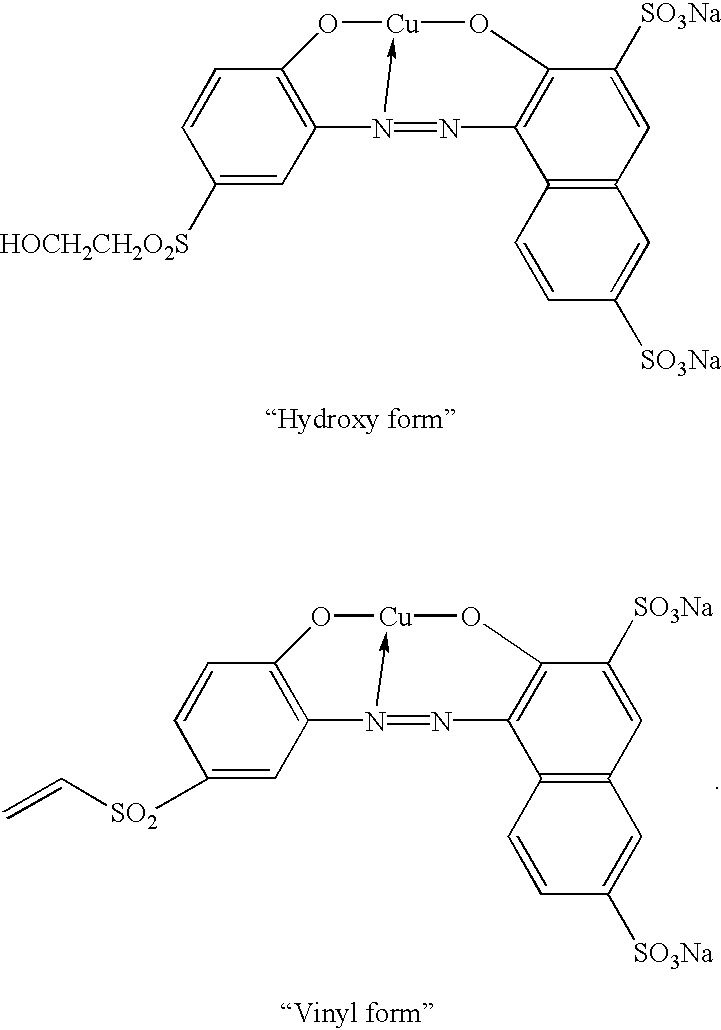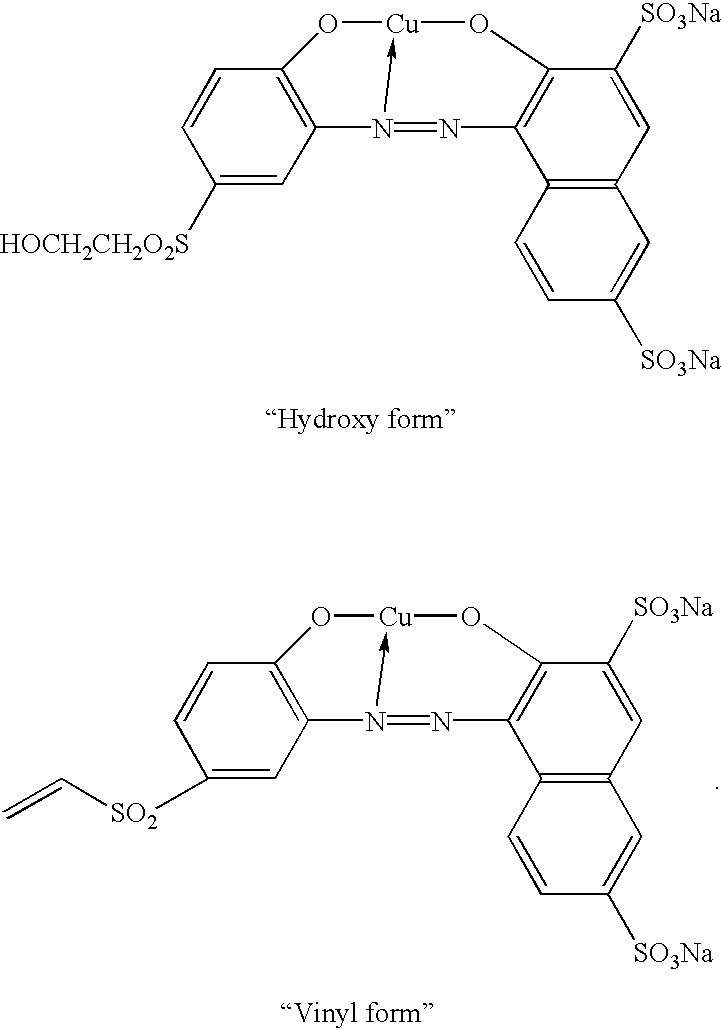Use of hydrolyzed Reactive Red 23
a technology of reactive red 23 and hydrolysis, which is applied in the direction of inks, duplicating/marking methods, organic dyes, etc., can solve the problems of ink-jet print quality that is still short of that produced by more expensive technologies, increase in cost, and result in ph instability over the life of ink
- Summary
- Abstract
- Description
- Claims
- Application Information
AI Technical Summary
Problems solved by technology
Method used
Image
Examples
example 1
The extent of real time fade of inkjet printed samples of passivated Reactive Red 23 was compared directly to similar inkjet printed samples of Magenta 377. Real time fade was measured by determining the original optical density of the inkjet printed samples and the faded optical density of the samples after 7.5 months of exposure to office light. The results are shown in the following table. Reactive red 23 was shown to fade 37% in 7.5 months, while Magenta 377 faded 86% under the same conditions.
example 2
The extent of accelerated fade of inkjet printed samples of passivated Reactive Red 23 was compared directly to similar inkjet printed samples of Magenta 377 and Pro-Jetm Fast Magenta 2. Accelerated fade was measured by determining the % optical density fade of the inkjet-printed samples at 3 months and 6 months accelerated fade. The results are shown in the following Table 2. Reactive red 23 was shown to fade 37% in 7.5 months, while Magenta 377 faded 86% under the same conditions.
example 3
Samples of RR23 were prepared under various conditions of pH and temperature. The area count @ 530 nm was measured at 1.2 minutes, 3.3 minutes and 5.4 minutes for the samples under the various conditions and from the Area Count measurements the percentages in each sample of Reactive Form (MW 673), Hydroxy Form (MW 593) and Vinyl Form (MW 575) were determined at the various conditions. The results are given below in Table 3.
PUM
| Property | Measurement | Unit |
|---|---|---|
| Fraction | aaaaa | aaaaa |
| Fraction | aaaaa | aaaaa |
| Fraction | aaaaa | aaaaa |
Abstract
Description
Claims
Application Information
 Login to View More
Login to View More - R&D
- Intellectual Property
- Life Sciences
- Materials
- Tech Scout
- Unparalleled Data Quality
- Higher Quality Content
- 60% Fewer Hallucinations
Browse by: Latest US Patents, China's latest patents, Technical Efficacy Thesaurus, Application Domain, Technology Topic, Popular Technical Reports.
© 2025 PatSnap. All rights reserved.Legal|Privacy policy|Modern Slavery Act Transparency Statement|Sitemap|About US| Contact US: help@patsnap.com



